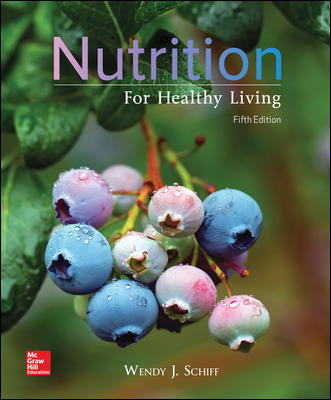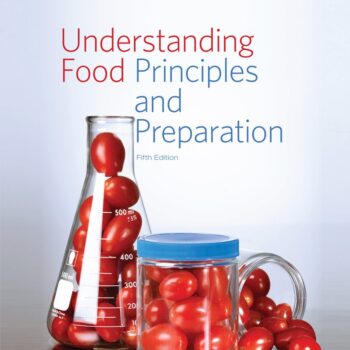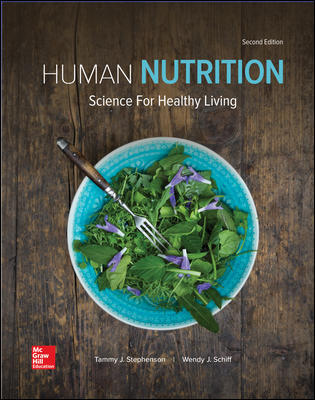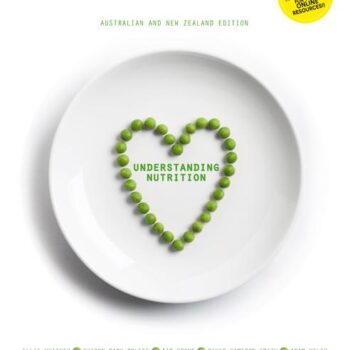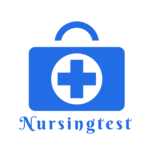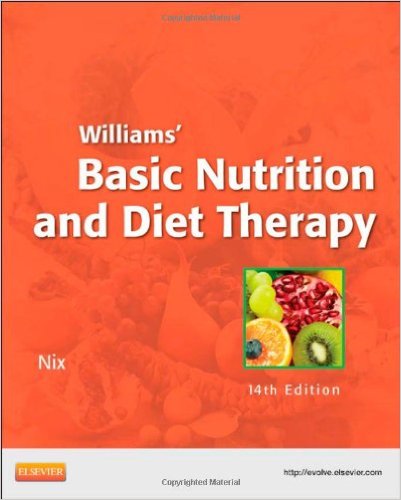
Williams’ Basic Nutrition & Diet Therapy, (LPN Threads) 14th Edition by Staci Nix – Test Bank
Original price was: $55.00.$28.00Current price is: $28.00.
Digital item No Waiting Time Instant DownloadISBN-13: 978-0323083478 ISBN-10: 0323083471Authors: Staci Nix McIntosh MS RD CDPublisher : MosbyEdition: 14th
Proper understanding of nutrition and diet therapy has become very important in today’s world, and this is the reason why the Williams’ Basic Nutrition & Diet Therapy, 14th Edition by Staci Nix is such an important read. This SPSS test bank assists students and professionals with real-world applications of the concepts learned, and serves as a useful guide for effective knowledge. Let’s take a look at the features of this resource, as well as how it can be of benefit to you by enhancing your experience while learning.
Key Topics Covered
The SPSS test bank for the book “Williams’ Basic Nutrition & Diet Therapy” includes numerous concepts and principles that must be covered by anyone pursuing a curriculum in nutrition and diet therapy. Some of these include the following concepts:
- Basic Nutrition Concepts: This includes the study of what basic nutrition is, and consists of macronutrients and micronutrients.
- Dietary Guidelines: This instructional area focuses on the current dietary goals, as well as how they can be tailored to suit different communities. .
- Therapeutic Diets: This topic covers the different therapeutic diets practiced in most clinical settings for the treatment of various diseases.
- Nutrition Throughout Life Stages: This area of study focuses on nutrition, starting from the neonatal stage through to elderly individuals.
- Diet and Cultural Practices: This topic explores the impact of various cultural practices on one’s diet and food preferences.
The Importance of Using the Test Bank
Test banks for Williams’ Basic Nutrition & Diet Therapy are highly beneficial because of the following reasons:
- Additional Knowledge: Test banks contain a variety of questions that have been carefully crafted to ensure that the reader fully understands the material presented.
- Building Self-Confidence: Such a wide variety of questions available means that practicing for the exam would be easy. In turn, this eases students as they confidently get to the actual exam.
- Reasoning Approach: The questions encourage students to think critically as the aim is to enable students to view real-life problems through the lens of the theoretical knowledge they acquired.
Tips to Make the Most Out of the Test Bank
Here are a few buids techniques that will help you get the most out of the test bank :
- Firm Time Schedule: Set aside a consistent time every week that you will use to become acquainted with the questions in the database.
- History and Insights: Once you have answered the question, review them and try to recall any past instances when you may have made the same mistake so that you can learn from them.
- Peer Communication: Try talking with classmates and friends about the material you learnt as there may be different angles or interpretations that were missed.
Summary
For those interested in studying nutrition and diet therapy, the Williams’ Basic Nutrition & Diet Therapy, 14th Edition Test Bank is a great and helpful tool. It is because of this test bank that you can better your studies, revise properly before sitting for exams, and use the knowledge gained in real-world scenarios. Make an investment in your education today and begin your journey toward becoming an expert in nutrition and diet therapy.
Williams’ Basic Nutrition & Diet Therapy, 14e (LPN Threads) 14th Edition by Staci Nix – Test Bank
MULTIPLE CHOICE
1. Promoting a health care service that improves diabetes management for the elderly in a community would assist in which of the following?
|
a. |
supporting the National Health Goals-Healthy People 2020 |
|
b. |
reducing world hunger in the United States and Asia |
|
c. |
improving Medicare reimbursement claims |
|
d. |
providing access to child care services for children |
ANS: A
Healthy People 2020 has a wide influence and is the focus of the nation’s main objective to promote health and prevent disease.
DIF:Cognitive Level: ApplicationREF:3-Feb
TOP: Nursing Process: Implementation MSC: NCLEX: Health Promotion and Maintenance
2. A patient requires a nutrition assessment. The most appropriate professional to perform the assessment is a
|
a. |
physician. |
|
b. |
nurse. |
|
c. |
public health nutritionist. |
|
d. |
registered dietitian. |
ANS: D
The registered dietitian is the nutrition expert registered with the Commission of Dietetic Registration (CDR), the certifying agency of Academy of Nutrition and Dietetics. Registered dietitians are the only professionals who have met strict educational and professional prerequisites and passed a national registration examination, which would properly prepare them to conduct a nutrition assessment.
DIF:Cognitive Level: ApplicationREF:1
TOP:Nursing Process: Assessment
MSC: NCLEX: Safe and Effective Care Environment: Management of Care
3. The sum of all body processes inside living cells that sustain life and health is
|
a. |
science. |
|
b. |
digestion. |
|
c. |
metabolism. |
|
d. |
nutrition. |
ANS: C
Metabolism is the sum of all chemical changes that take place in the body. Metabolism provides energy, builds tissue, and regulates metabolic processes in the body.
DIF: Cognitive Level: Knowledge REF: 4-Mar TOP: Nursing Process: Planning
MSC:NCLEX: Physiological Integrity: Physiological Adaptation
4. The nutrients that provide the body with its primary source of fuel for energy are
|
a. |
vitamins. |
|
b. |
minerals. |
|
c. |
fiber. |
|
d. |
carbohydrates. |
ANS: D
Carbohydrates (e.g., starches and sugars) are the body’s primary fuel to carry out necessary processes; fat is the secondary source of energy.
DIF: Cognitive Level: Knowledge REF: 4 TOP: Nursing Process: Planning
MSC:NCLEX: Physiological Integrity: Physiological Adaptation
5. Which of the following is the most accurate statement regarding the functions of protein?
|
a. |
Proteins can be a primary fuel source even if there is adequate carbohydrate intake. |
|
b. |
Proteins are a necessary nutrient to provide energy for the body in times of stress. |
|
c. |
Proteins can be used as coenzyme factors during cell metabolism. |
|
d. |
Proteins are essential to tissue building and repair within the body. |
ANS: D
The primary function of proteins is to provide amino acids, which are the building units necessary to build and repair tissues within the body. This is a constant process that ensures adequate growth and maintenance of tissues for a strong body.
DIF:Cognitive Level: ComprehensionREF:4
TOP:Nursing Process: Assessment
MSC:NCLEX: Physiological Integrity: Physiological Adaptation
6. A 65-year-old man requires 2000 kcal/day without any specific fat or carbohydrate requirements. The approximate number of kilocalories per day from fat his diet should provide is _____ kcal/day.
|
a. |
400 to 700 |
|
b. |
100 to 300 |
|
c. |
500 to 800 |
|
d. |
900 to 1200 |
ANS: A
Fat should provide no more than 20% to 35% of the total kilocalories per day, so for a 2000-kcal diet 400 to 700 kcal should be provided.
DIF: Cognitive Level: Application REF: 4 TOP: Nursing Process: Planning
MSC: NCLEX: Health Promotion and Maintenance
7. The body’s main storage form of carbohydrate is
|
a. |
glycogen. |
|
b. |
glycerol. |
|
c. |
glucagon. |
|
d. |
glucose. |
ANS: A
Glycogen is a polysaccharide that is the main storage form of carbohydrate in the human body. It is mainly stored in the liver and to a lesser extent in muscle tissue.
DIF: Cognitive Level: Knowledge REF: 4 TOP: Nursing Process: Planning
MSC:NCLEX: Physiological Integrity: Physiological Adaptation
8. The number of kilocalories provided by one slice of bread that contains 30 g carbohydrate, 3 g protein, and 1 g fat is _____ kcal.
|
a. |
34 |
|
b. |
136 |
|
c. |
141 |
|
d. |
306 |
ANS: C
Calculate as follows: Carbohydrate provides 4 kcal/g, protein provides 4 kcal/g, and fat provides 9 kcal/g. Therefore:
30 g carbohydrate × 4 kcal/g = 120 kcal
3 g protein × 4 kcal/g = 12 kcal
1 g fat × 9 kcal/g = 9 kcal
= 141 total kcal (120 kcal 12 kcal 9 kcal)
DIF:Cognitive Level: ApplicationREF:4
TOP:Nursing Process: Assessment
MSC:NCLEX: Physiological Integrity: Physiological Adaptation
9. The number of kilocalories from fat in a sandwich that contains 22 g fat is _____ kcal.
|
a. |
88 |
|
b. |
132 |
|
c. |
154 |
|
d. |
198 |
ANS: C
Fat provides 9 kcal/g. Thus, 22 g fat × 9 kcal/g = 198 kcal.
DIF:Cognitive Level: ApplicationREF:4
TOP:Nursing Process: Assessment
MSC:NCLEX: Physiological Integrity: Physiological Adaptation
10. The number of kilocalories from protein in a sandwich that contains 15 g protein is _____ kcal.
|
a. |
45 |
|
b. |
60 |
|
c. |
75 |
|
d. |
135 |
ANS: B
Protein provides 4 kcal/g. Thus, 15 g protein × 4 kcal/g = 60 kcal.
DIF:Cognitive Level: ApplicationREF:4
TOP:Nursing Process: Assessment
MSC:NCLEX: Physiological Integrity: Physiological Adaptation

